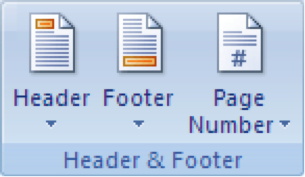
To get the margins back, just to to the same area and double click again. When you open the document next time or send it to someone else, everyone gets confused. Unfortunately, most often this happens by mistake and you don’t realize it. Now you know why it works the way it does. Now it stops showing the top and bottom margin so that you can read more text with the same screen size. When you move your cursor just above the topmost margin of the first page or between the gap between any two pages, the cursor shape changes and it showsĭo that. That is why Microsoft created a nice feature. If you could save that wasted space, you could read a few paragraphs more on the same screen. Even if you have headers and footers, you don’t want to read them repeatedly while working on the document. So while you scroll, two inches of precious screen space is wasted in showing blank top / bottom margins. And usually the header and footer is ONE INCH each. Now, the space available on the screen is limited. Click Menus tab Click View Menu Then you will view HeaderFooter item.
VIEWING HEADER AND FOOTER IN WORD CODE
The very bottom section of the code is also necessary to change to print layout view (default view) and to force the cursor to be located in main document. Create a new word document called SourceAddresses.docx. And while creating the document, you read it on screen. Method B: familiar way to find out Header and Footer in Edit Menu if you have Classic Menu. Step 2: Create a source Word document containing a table of office location names and the names of the header and footer images. However, printing happens rarely nowadays. In this view, the page is shown exactly as it is going to be printed. When you scroll down, it looks like this … The first page starts just be low the ruler… like this… When you scroll down, each page is starting immediately after the previous page. While working with Word, sometimes the header and footer disappears. This is mind-boggling because ultimately all I'm after is a wayfinder akin to "display the current chapter where I'm currently located in the document outline at the point when the reader turned the page and the new header gets generated.Whatever is irritating is usually very useful! In my experiments so far, it seems the StyleRef syntax alone can only find Heading 1 text that occurs on the same page.
VIEWING HEADER AND FOOTER IN WORD UPDATE
Thus, I'd like the header of page 2 to say "Relevant Professional Experience, continued" or something to that effect (a field coded STYLEREF "Heading 1" plus the text ", continued" seems like it should do the trick) and each subsequent header would dynamically update in the same way for later Headings 1, e.g., "Publications, Presentations, and Appearances" takes up several pages and ideally the heading of each page would tell the reader exactly where they are in the navigation. Thanks for this great explanation about StyleRef.ĭo you know of a technique for pulling the Heading 1 text from the previous page? For example, page 1 of my CV has a Heading 1 style applied to the text "Relevant Professional Experience." The body text beneath this heading extends onto page 2. NOTE 3: Here's another MS Word article you might be interested in: If youve already inserted a header or footer and want to edit it, simply double-click it now. If you refer to these built-in styles with just their number, it works correctly across all Word language versions. When headers and footers are displayed, a Header and Footer toolbar. Choosing View Header and Footer in any other Word view changes the view to Print Layout.

Headers and footers are only visible in Print Layout view. This causes a "style not found" message, because Word tries to find "Heading 1" when that style is now called "Titre 1", for example. The header/footer layer contains any page numbers, text, or graphics that have been added to headers or footers in a document. to the local language when you switch Word language versions. Word translates the style names of the built-in Heading 1, Heading 2, etc. NOTE2: If you use different language versions of Word at the same time (the UI language, not the document language), edit the field codes and replace STYLEREF "Heading 1" with STYLEREF 1.

One pointing at the number, and the other one pointing at the name. NOTE 1: If you want the chapter number AND chapter name in the same header/footer, insert this field twice. To insert the chapter number instead, select the Insert paragraph number check box.


 0 kommentar(er)
0 kommentar(er)
